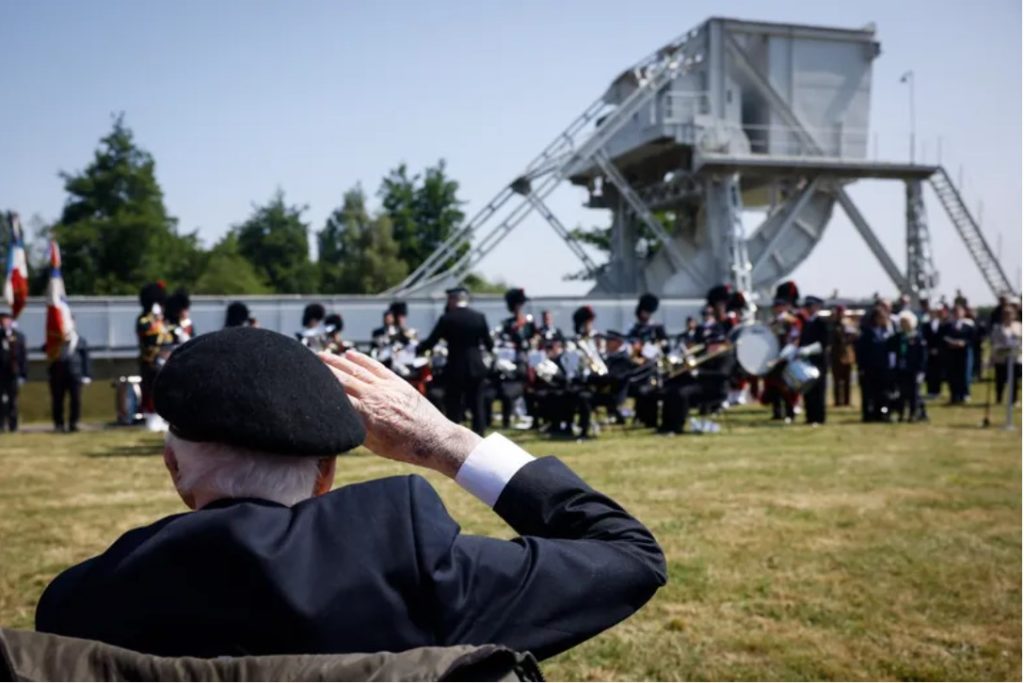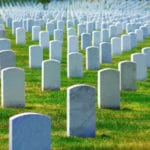Veterans of World War II visit Utah Beach to remember D-Day

AP Photo/Thomas Padilla
Robert Gibson’s memories of D-Day was made even more vivid by the sight of Utah Beach’s expanse, its sand swirling in the breeze and the dazzling brightness.
The veteran, who was 99 years old, arrived there on June 6, 1944, along with more than 150,000 other Allied soldiers. He described the situation as “tough,” adding, “It was tough.”
Numerous World War II veterans, primarily Americans and Britons, gathered to Normandy this week to commemorate the 79th anniversary of D-Day, the pivotal assault that resulted in the liberation of France and Western Europe from Nazi rule. Gibson was one of these warriors.
He recalled, “Many casualties. To enter the beach, we came very close to running over bodies. Do not forget that we were just 18 or 19 years old. I’m happy I succeeded.
On D-Day, Gibson arrived on Utah Beach in the second wave, following the assault soldiers. He lived to battle on in Normandy and ultimately in Germany.
The first job of his battalion, he said, was “to guard an ammunition dump and the first night it got struck. You didn’t know where you were to go. Bullets were going all over the place. But we ducked it.”
On Utah Beach, Andrew Negra also touched down. It was the 18th of July 1944. This year, he visited again and was “amazed” by the kind greeting he received from the local French population.
Negra took part in combat activities up until April 1945, when his division entered eastern Germany.
On Sunday, more than 40 World War II veterans from the United States organized a wheelchair-accessible march through the streets of Sainte-Mere-Eglise, a little village where hundreds of paratroopers jumped on June 6, 1944, shortly after midnight.
People cheered and applauded while saying “Merci” and “Thank you.” Youngsters waved, and several families requested pictures with the guys.
Nothing is assured, Edwards said, given the ages of the warriors who fought more than seven decades ago. Therefore, we want to be sure that we do everything in our power to provide them with a fantastic and delightful experience.
After that, the veterans traveled to Sainte-Marie-du-Mont for a little ceremony at a monument overlooking Utah Beach that honors the U.S. Navy.
Some of the almost century-old people requested volunteers to walk with them down the long expanse of sand.
As he recalled what happened to his elder brother there—who nearly perished after his vehicle blew up during the landings—98-year-old Matthew Yacovino started to cry.
“The driver got killed and my brother fell on the beach unconscious,” Yacovino said with tears in the eyes.
In time, his brother became better. During the conflict, Yacovino himself worked as a combat air crewman.
Valérie and Lionel Draucourt, visitors from the Paris area who had gone to Normandy for historical reenactments of what had happened there, were dressed in khaki uniforms. They desired to show the veterans their respect.
“To be honest, I don’t think we can really comprehend what they went through. Lionel Draucourt stated, “It’s so large, it’s ridiculous; we don’t comprehend it.
Veterans were expected to participate in the 79th anniversary’s formal festivities on Tuesday, including those at the Normandy American Cemetery.
On D-Day, 7,000 boats brought Allied troops to the beaches with the codes Omaha, Utah, Juno, Sword, and Gold. 4,414 Allied soldiers, including 2,501 Americans, died on that one day. Over 5,000 people suffered injuries.










